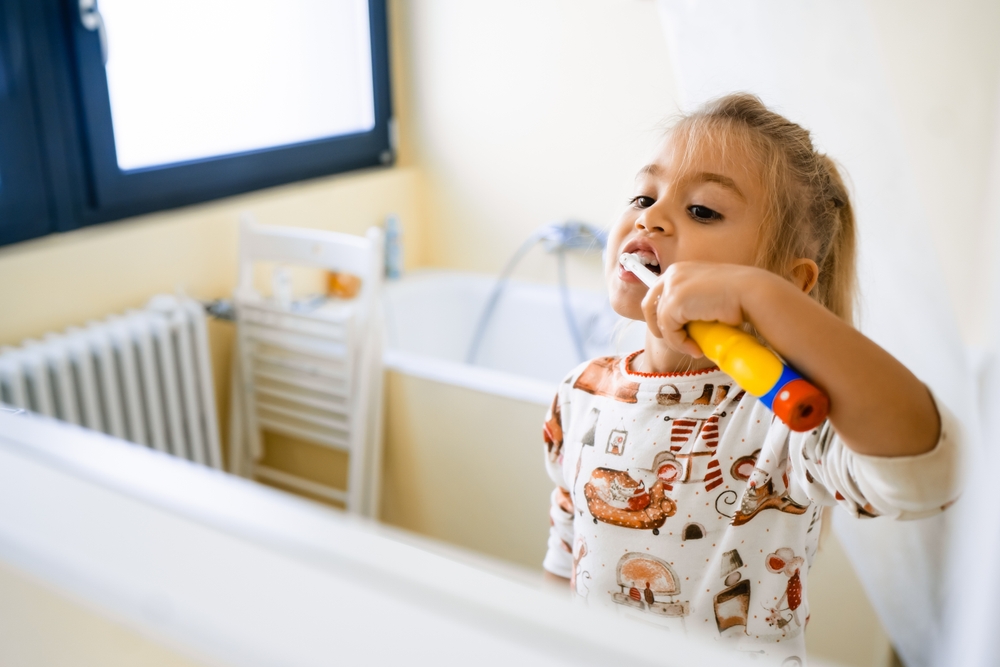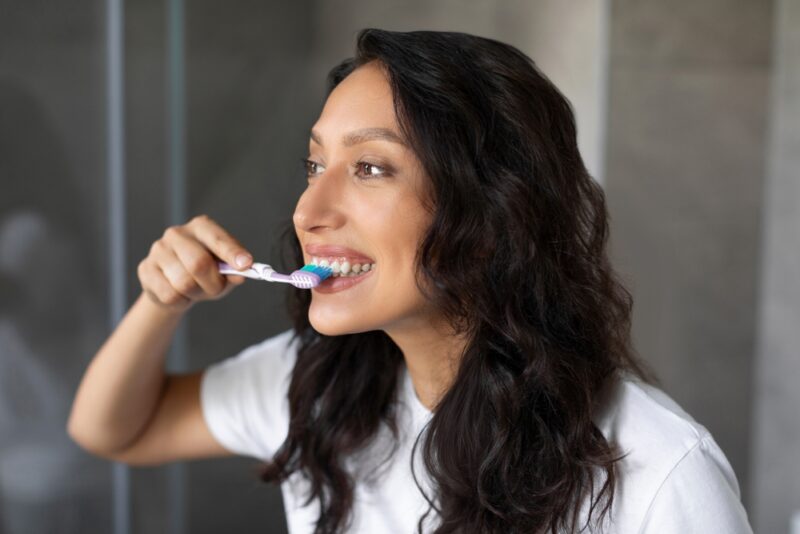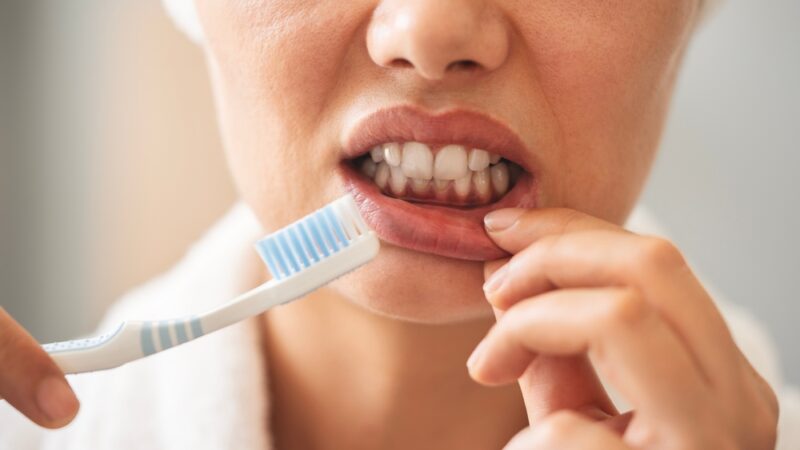Electric toothbrushes are becoming more popular, not just for adults but for children too. Many parents wonder if an electric toothbrush could help improve their child’s oral hygiene and make brushing more enjoyable. Here’s a guide from Aloe Dental Wellness in Goleta, CA to help you decide if your child is ready for their first electric toothbrush and how to choose the best option if they are.
1. Benefits of an Electric Toothbrush for Children
Electric toothbrushes offer several benefits for kids, including improved cleaning efficiency and ease of use. Here are some advantages:
- Superior Plaque Removal: The oscillating or vibrating bristles of electric toothbrushes make them highly effective at removing plaque and food particles, which is especially helpful for kids who may struggle to brush thoroughly.
- Ease of Use: Children don’t have to master the perfect brushing technique since the toothbrush does a lot of the work for them.
- Fun Factor: Many electric toothbrushes for children come with engaging features like music, lights, and timers, making brushing a more enjoyable activity. This can help motivate reluctant brushers to brush more regularly and for the full two minutes.
- Timer for Guidance: Most electric toothbrushes have built-in timers, which can guide children to brush for the recommended two minutes, helping to establish good brushing habits early on.
2. When Should a Child Start Using an Electric Toothbrush?
There’s no set age when a child should start using an electric toothbrush, as it largely depends on their readiness and comfort level. However, the American Dental Association (ADA) suggests that children can safely start using an electric toothbrush as early as three years old, with appropriate supervision. Here are a few factors to consider:
- Fine Motor Skills: By around age three, many children have developed enough fine motor skills to hold and use an electric toothbrush comfortably.
- Comfort with Toothbrushing: If your child is already comfortable with a manual toothbrush and shows interest in using an electric one, they might be ready for the transition.
- Parental Supervision: Young children should always be supervised when brushing, whether they use a manual or electric toothbrush, to ensure they brush all areas of their teeth and avoid accidental injury.
3. Choosing the Right Electric Toothbrush for Your Child
If you decide that your child is ready for an electric toothbrush, the next step is finding the right one. Here’s what to look for:
- Soft Bristles: Children’s teeth and gums are more delicate than adults, so it’s essential to choose a toothbrush with soft bristles to prevent damage to their enamel and gum tissue.
- Age-Appropriate Design: Look for a toothbrush specifically designed for your child’s age group. Many manufacturers offer toothbrushes with smaller brush heads and handles designed for little hands.
- Interactive Features: Some children’s electric toothbrushes come with fun features like built-in songs, character designs, and apps that can make brushing time more engaging. These features can be beneficial if your child is a reluctant brusher.
- Timer and Pressure Sensor: Some electric toothbrushes have a built-in timer to help ensure your child brushes for the full two minutes. Pressure sensors can also help prevent your child from brushing too hard, protecting their gums and enamel.
4. Making the Transition from Manual to Electric
Introducing an electric toothbrush to your child can be exciting, but it may also take some time for them to get used to the sensation. Here are some tips to help ease the transition:
- Explain the Benefits: Help your child understand that the new toothbrush is a tool to keep their teeth extra clean and healthy. You can explain how it works and why it’s an upgrade from their old toothbrush.
- Allow Exploration: Let your child hold and examine the toothbrush before they use it. Turn it on and show them how it vibrates or oscillates, so they know what to expect. Some kids may feel nervous about the sensation at first, so give them time to adjust.
- Practice Together: The first few times, brush together with your child. Demonstrate how you use your electric toothbrush, if you have one, and encourage them to follow your lead.
- Start Slowly: If your child feels uneasy about the vibration or sound, let them start by using the electric toothbrush with it turned off. Once they’re comfortable, gradually introduce the power function.
5. Encouraging Good Brushing Habits
While an electric toothbrush can make brushing easier, it’s still important to teach your child the fundamentals of good oral hygiene:
- Twice a Day: Make sure your child brushes their teeth twice daily, once in the morning and once before bedtime, for two minutes each time.
- Flossing: As soon as your child’s teeth start touching, introduce flossing to remove plaque and food particles from between their teeth.
- Supervised Brushing: Even with an electric toothbrush, young children need supervision until they develop the skills and consistency to brush effectively on their own.
6. Common Concerns About Electric Toothbrushes for Kids
Parents often have a few concerns about introducing electric toothbrushes to their children, which is understandable. Here are some common worries and reassurances:
- Noise Sensitivity: Some children may be sensitive to the noise or sensation of an electric toothbrush. If this is a concern, start with a quieter model or allow them to hold the toothbrush and feel its vibrations before using it in their mouth.
- Effect on Primary Teeth: Electric toothbrushes are safe for young children’s baby teeth, provided you choose one with soft bristles and monitor your child’s brushing.
7. Signs Your Child May Not Be Ready
Despite the advantages, not every child may be ready for an electric toothbrush. Here are a few signs that it might be best to stick with a manual toothbrush for a bit longer:
- Fear of Loud Noise or Vibration: If your child shows significant anxiety or discomfort with the electric toothbrush, it may be worth waiting until they feel more comfortable.
- Underdeveloped Coordination Skills: If your child has difficulty holding or maneuvering the toothbrush, they may need more time to develop their fine motor skills.
- Unwillingness to Try: Some kids simply aren’t interested in using an electric toothbrush, and that’s okay. It’s better to wait than to make brushing feel like a negative experience.
8. The Bottom Line
An electric toothbrush can be an excellent tool to support your child’s oral health, especially if they’re ready for the change and excited about it. With proper guidance, the right toothbrush, and a fun approach, your child can enjoy brushing more and build habits that will serve them for life.
As a parent, trust your instincts about whether your child is ready for an electric toothbrush. If they seem interested and excited to give it a try, you’re likely on the right path. And remember, the ultimate goal is to encourage consistent, effective brushing habits that keep their teeth and gums healthy—whether they’re using a manual or electric toothbrush.




